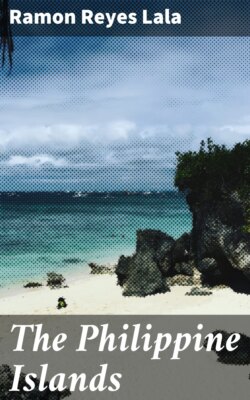Читать книгу The Philippine Islands - Ramon Reyes Lala - Страница 12
На сайте Литреса книга снята с продажи.
The Dutch Appear upon the Scene.
ОглавлениеTable of Contents
The Chinese pirate had been taught a severe lesson, and had departed. The memory of his ravages, however, was still fresh in the minds of his conquerors when other buccaneers, far mere formidable and dangerous, appeared in the waters of the Philippines, threatening the peace and safety of the colonists.
Kindling with a desire for vengeance on their ancient foes the Spaniards, and flaming with greed for the richly-freighted Spanish argosies, the Dutch made repeated sallies from their secure retreat in the Moluccas, spreading terror in their wake. The galleons full of silver from Mexico, the ships laden with the comforts and luxuries of far-away Spain, fell a delightful prey into the hands of these remorseless freebooters, that never gave nor asked quarter. Many were the conflicts with these ruthless invaders, and many a rich prize did they tow away from the Philippine waters, while the angry Spaniards on shore stood transfixed—in helpless misery.
Millions of dollars intended for the salaries of the Government officials and the troops, were thus stolen, and though the colonists were often victorious, yet the enemy, with characteristic Dutch audacity, refused to be defeated; in fact, he invariably reappeared with a new demonstration of bloody rapacity.
Upon one occasion a Dutch squadron anchored at the entrance of Manila Bay. It remained several months, seizing from time to time the merchantmen on their way to the Manila market. It thus secured an immense booty; its presence, too, becoming extremely prejudicial to trade and to the interests of the colony.
Juan de Silva, the Governor, therefore began to prepare an armament to drive these freebooters from the bay. One night he dreamt that St. Mark had offered to help him. Awaking, he consulted a priest about his dream, who interpreted it to be an omen of victory. On St. Mark’s day, accordingly, the Spaniards sallied forth to meet their hereditary foe; they sailed from Cavité with ten ships, carrying twenty guns. Over 1,000 Europeans and a large number of natives manned this fleet, the latter being religiously told that the Dutch were infidels, and, therefore, deserved extermination.
Once more the possession of the colony was to be decided. This time the conflict was to be between two rival nations from the same continent—between Protestant and Catholic. The clergy, hence, were keenly alive to its importance: mass was said in all the churches, bells were tolled, and images of the Patron Saints of the colony were daily paraded through the streets.
The Governor himself took command, and incited his followers to martial order by proclaiming St. Mark’s promised intercession. From his ship he unfurled the royal standard—on which the image of the Virgin was conspicuously embroidered—to give encouragement to the eyes of the faithful. He then gave the signal for the advance, and they swiftly bore down upon the enemy. The Dutch were quietly awaiting the attack, and the conflict was fierce and sanguinary. It was a calm, beautiful day; but the calmness soon gave place to the thundering turbulence of battle, and the beauty soon became the ugliness of war.
The contest lasted about six hours, and the Dutch, unable longer to cope against odds so overwhelming, were finally vanquished; their three ships were destroyed, and their flags, artillery, and plundered merchandise to the value of $300,000 were seized.
San Augustine Church, in Old Manila.
This important struggle is known in the history of the islands as the battle of Playa Honda. Had it ended otherwise, it is probable that the Philippines would have been for the Dutch another Java, and a most interesting problem would not have sought solution at the hands of the American people.
Several other engagements with the Dutch occurred at different times; first one, then the other side being victorious. And thus for over a century the contest continued, until by the Peace of Westphalia, in 1648, Holland’s independence was fully established, her impoverished and weakened foe being forced to a tardy recognition of what had been an obstinate fact for many years.
